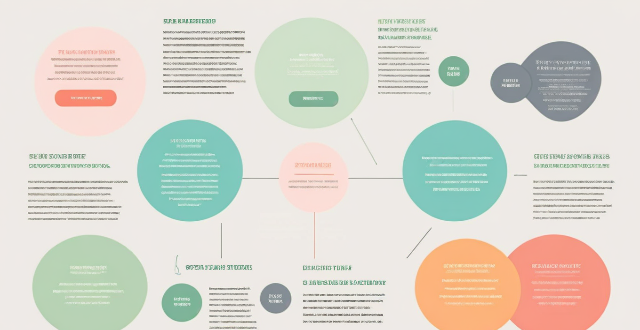Portfolio Allocation

What is the significance of rebalancing an investment portfolio ?
Rebalancing an investment portfolio is a crucial aspect of maintaining a well-diversified and risk-appropriate investment strategy. It involves periodically adjusting the asset allocation of your portfolio to align with your original investment goals and risk tolerance levels. The significance of rebalancing an investment portfolio includes maintaining diversification, controlling risk exposure, and staying disciplined. The frequency of rebalancing depends on various factors such as your investment goals, risk tolerance, and market conditions. Rebalancing an investment portfolio involves several steps, including determining your target allocation, evaluating your current allocation, selling off high-performing assets, reinvesting proceeds into underperforming assets, and reviewing and adjusting your portfolio regularly.

What is the role of asset allocation in an investment strategy ?
Asset allocation is a crucial component of any investment strategy, involving dividing your portfolio among different asset classes based on your financial goals, risk tolerance, and investment horizon. It plays a vital role in determining the overall performance of your portfolio by helping you manage risk and maximize returns through diversification. To determine your asset allocation, consider your financial goals, risk tolerance, investment horizon, and consult with a financial advisor. Review and adjust your asset allocation regularly as your circumstances change and new opportunities arise.

How do I create a diversified portfolio in the stock market ?
Creating a diversified portfolio is an essential strategy for mitigating risk and maximizing returns in the stock market. Here are some steps to help you create a diversified portfolio: 1. Determine your investment goals, including factors such as your risk tolerance, investment horizon, and financial objectives. 2. Allocate assets across different asset classes, such as stocks, bonds, cash, and other securities. 3. Select securities within each asset class that align with your investment goals and are not highly correlated with each other. 4. Rebalance your portfolio regularly to maintain your desired asset allocation. 5. Monitor the performance of your portfolio and make adjustments if necessary. By following these steps, you can create a well-diversified portfolio that aligns with your investment goals and helps you achieve long-term financial success.

How can I diversify my portfolio with bond investments ?
Diversifying your portfolio with bond investments can reduce investment risk and provide a steady stream of income. There are several types of bonds, including government, corporate, municipal, and foreign bonds, each with its own characteristics and risks. Bond mutual funds and ETFs offer automatic diversification across multiple issuers and types of bonds. When investing in bonds, consider factors such as credit quality, interest rate risk, inflation risk, and liquidity. To effectively diversify your portfolio with bonds, allocate a portion of your portfolio to bonds, invest in different types of bonds, consider bond maturities, and rebalance regularly. Consulting with a financial advisor can help determine the best bond strategies for your individual financial goals and risk tolerance.

What role do governments play in vaccine allocation ?
Governments have a crucial role in vaccine allocation, including planning and strategy development, resource allocation, prioritization and targeting, ensuring equity and accessibility, and maintaining transparency and accountability. They collaborate with healthcare providers and pharmaceutical companies to ensure a smooth distribution process, invest in building capacity within the healthcare system, determine priority groups for vaccination based on various criteria, address issues related to vaccine hesitancy and misinformation, provide regular updates on vaccine availability and distribution progress, and establish mechanisms for accountability. By effectively managing vaccine allocation, governments can protect public health and control the spread of infectious diseases.

How can women build a diversified portfolio to minimize risks and maximize returns ?
The article provides a comprehensive guide on how women can build a diversified portfolio to minimize risks and maximize returns in the stock market. It emphasizes the importance of education, starting early, setting clear goals, diversifying investments across different asset classes, industries, and geographic regions, rebalancing regularly, and considering professional advice when needed. By following these tips, women can create a strong foundation for long-term financial success.

How do I diversify my cryptocurrency portfolio ?
Diversifying a cryptocurrency portfolio involves understanding the importance of spreading risk, setting clear investment goals, researching different cryptocurrencies, allocating based on risk tolerance, considering dollar-cost averaging, staying updated with market trends, rebalancing periodically, using a reliable crypto exchange, prioritizing security, and seeking professional advice when needed. This strategy helps to mitigate the impact of volatility and potentially maximize returns over the long term.

What is the process of vaccine allocation ?
Vaccine allocation is a crucial step in the fight against infectious diseases, such as COVID-19. It involves distributing vaccines to those who need them most, ensuring equitable access and maximizing public health benefits. The process includes determining priorities, identifying supply sources, allocating doses, distributing vaccines, and administration and tracking. By following these steps, we can ensure that vaccines are distributed equitably and effectively, helping to control the spread of infectious diseases and protect public health.

What role does real estate play in a retirement portfolio ?
The text discusses the role of real estate in a retirement portfolio, highlighting its potential benefits such as income generation through rental income and appreciation, serving as an inflation hedge by maintaining its value during inflationary periods and allowing rent adjustments, and providing diversification by being a non-correlated asset class and an alternative investment. It also outlines risks associated with real estate investments, including liquidity risk due to the illiquid nature of properties, market risk due to fluctuating property values influenced by local market conditions, and management responsibilities that come with owning rental property. The conclusion emphasizes the importance of considering these advantages and risks when incorporating real estate into a retirement strategy, along with the need for proper planning and consideration of personal circumstances.

How can I diversify my portfolio with different financial products ?
Diversifying your portfolio with different financial products is crucial for managing risk. Here's a summary of the key strategies: 1. **Stocks**: Invest in different industries, company sizes, and both growth and value stocks. 2. **Bonds**: Purchase bonds with varying maturities, including corporate, government, and municipal bonds. Consider bond funds or ETFs for broader exposure. 3. **Mutual Funds and ETFs**: Invest in funds focusing on different asset classes, geographical regions, or sectors like technology or healthcare. 4. **Real Estate**: Include options like direct ownership, REITs, or real estate syndications for potential rental income and as a hedge against inflation. 5. **Commodities and Precious Metals**: Add physical commodities, futures, options, or commodity-focused ETFs to serve as a store of value during inflationary periods. 6. **Alternative Investments**: Allocate a portion of your portfolio to assets like private equity, hedge funds, or collectibles for unique opportunities outside traditional markets. 7. **International Exposure**: Expand beyond domestic markets through foreign stock markets, international mutual funds or ETFs, and emerging market investments. Diversification requires a thoughtful approach to balancing risk and reward across various asset classes and markets, considering investment goals, risk tolerance, and time horizon.

How can investors ensure that their portfolios align with global climate goals ?
Investing in alignment with global climate goals is crucial for a sustainable future. Investors can ensure their portfolios reflect these objectives by understanding the Paris Agreement's goals, assessing current portfolio alignment, shifting investment strategies towards sustainable and impact investing while divesting from high-risk sectors, engaging with companies on sustainability issues, regularly monitoring and reporting on portfolio alignment, collaborating with other investors, and staying informed through continuous learning. This approach helps support a transition to a low-carbon economy while achieving competitive financial returns.

How does gold investment work ?
Gold investment is a popular way to diversify your portfolio and hedge against inflation, offering various forms such as physical gold, ETFs, mutual funds, mining company stocks, futures, and options. It provides benefits like hedging against inflation, portfolio diversification, and acting as a safe haven during crises but also involves risks including price volatility and storage costs. To start investing in gold, one should educate themselves, determine their investment goals, choose the right type of investment, allocate a budget, research vendors/brokers, and monitor their investment.

What is the impact of market volatility on my investment strategy ?
Market volatility can significantly impact your investment strategy by affecting risk tolerance, portfolio allocation, timing of investments, emotional responses, and both long-term and short-term goals. It's crucial to anticipate and account for market fluctuations in your approach. Diversification, rebalancing, and strategies like dollar-cost averaging can help mitigate risks and smooth out the effects of volatility over time. Emotional discipline is also essential, as fear and greed can lead to suboptimal decisions. Opportunities may arise during volatile periods, but it's important not to overreact to short-term events and maintain a focus on long-term fundamentals. A well-diversified portfolio and a long-term perspective are key tools for navigating market volatility successfully.

How can I protect my growing wealth from market fluctuations ?
Market fluctuations are a natural part of any investment journey. However, as your wealth grows, it becomes increasingly important to implement strategies that can help protect your assets from the ups and downs of the market. Here's how you can do it: - Diversify Your Portfolio - Use Hedging Strategies - Stay Updated on Economic Indicators - Regularly Review and Rebalance Your Portfolio - Work with Financial Advisors

How effective has international climate finance been in reducing greenhouse gas emissions ?
The text discusses the effectiveness of international climate finance in reducing greenhouse gas emissions. It states that such a financial mechanism is vital for supporting developing countries to reduce their GHG emissions and adapt to climate change impacts, but it falls short of global climate action needs. The key points include the total funds committed and disbursed, allocation across sectors and regions, direct and indirect emission reductions achieved, and challenges related to funding adequacy, allocation, and monitoring. The conclusion emphasizes the importance of addressing these challenges to enhance the effectiveness of international climate finance in the future.

How much should I invest in each type of asset class ?
The text provides a guide on how to determine the allocation of funds across different asset classes based on investment goals, risk tolerance, time horizon, and financial situation. It suggests that younger investors should allocate more towards stocks while older investors should gradually shift towards safer investments. The text also emphasizes the importance of regularly reviewing and rebalancing the portfolio and seeking professional advice when unsure about investment decisions.

How do I get started with bond investing ?
Bond investing is a popular way to diversify your portfolio and earn a steady income. Here are some steps to help you get started: 1. Understand the basics of bonds. 2. Determine your investment objectives. 3. Choose the right type of bond for you. 4. Consider the duration of the bond. 5. Research and select brokers or intermediaries. 6. Diversify your portfolio by investing in various types of bonds issued by different entities. 7. Monitor your investments regularly and adjust your portfolio as needed based on changing market conditions or personal circumstances.

What are the ethical considerations in the allocation and use of climate finance ?
The article discusses the key ethical considerations that must be addressed in the allocation and use of climate finance to ensure its effectiveness and equity. These considerations include transparency, accountability, equity, justice, sustainability, long-term goals, inclusivity, participation, innovation, and learning. By prioritizing these factors, climate finance can contribute more effectively to global efforts to tackle climate change and create a more just and resilient world for current and future generations.

How can data analytics be used to inform school policy decisions and resource allocation ?
Using data analytics can greatly inform school policy decisions and resource allocation. By analyzing data, schools can identify areas for improvement, personalize learning experiences, evaluate teacher performance, allocate resources effectively, and enhance student support services. This approach leads to improved student outcomes, teaching quality, and resource use.

What is the role of financial advisors in developing an investment strategy ?
Financial advisors are pivotal in shaping investment strategies by identifying financial goals, assessing risk tolerance, analyzing market conditions, designing portfolio allocation, monitoring and adjusting investments, and providing ongoing advice. They help individuals and businesses achieve their short-term objectives like building an emergency fund and reducing debt, as well as long-term goals such as retirement planning and education funding. By evaluating risk appetite, they tailor investment plans that prioritize capital preservation or pursue growth potential through diversification. Understanding macroeconomic factors and industry trends further informs investment decisions. In portfolio design, they allocate assets across classes and employ diversification to mitigate risks. Through performance tracking and rebalancing, they ensure investments remain aligned with goals. Moreover, financial advisors offer educational and emotional support, enhancing client knowledge and helping them manage risks. Overall, they ensure strategies reflect clients' evolving needs, fostering informed and balanced investment approaches.

How do environmental subsidy policies affect sustainable development ?
This topic summary discusses the impact of environmental subsidy policies on sustainable development. These policies aim to promote renewable energy, reduce pollution, conserve natural resources, and promote eco-friendly technologies through financial incentives provided by governments. However, challenges such as limited funding, inefficient allocation of funds, and unintended consequences can hinder their effectiveness. To maximize their impact, it is crucial to ensure efficient allocation of funds and consider the broader impact of these policies.

How much equity should I be prepared to give up for investment in my startup ?
When determining equity allocation for startup investment, consider theWhen determining equity allocation for startup investment, consider the type of investor, company value Finally, consider the company's goals and vision when deciding on equity allocation, as giving up too much equity can limit future options and affect control over decision-making.

How do I adjust my investment strategy during economic downturns ?
Adjusting Investment Strategy During Economic Downturns: - **Diversify Your Portfolio**: Allocate across stocks, bonds, and cash equivalents; invest in different sectors and international markets. - **Rebalance Your Portfolio**: Monitor performance and composition regularly; rebalance to maintain diversification. - **Focus on Quality Stocks**: Choose companies with strong financials, stable earnings, and resilient business models. - **Consider Bonds and Other Fixed Income Securities**: Invest in government, corporate, or municipal bonds for stability and potential returns. - **Stay Disciplined and Avoid Emotional Decisions**: Stay calm, focus on long-term goals, and avoid herd mentality.

What is the relationship between social inequality and access to resources for climate adaptation ?
The relationship between social inequality and access to resources for climate adaptation is influenced by economic, social, and political factors. Wealthier individuals often have more resources, while marginalized groups may face discrimination. Education plays a crucial role in raising awareness about climate change, and cultural beliefs can impact adaptation strategies. Government policies can either exacerbate or mitigate social inequality, and participatory decision-making processes are essential for equitable resource allocation. Addressing social inequality requires equitable resource allocation, capacity building, community-driven approaches, and targeted interventions for vulnerable populations.

How do I track my stock investments ?
How to track your stock investments effectively by setting up a brokerage account, creating a watchlist, using tracking tools, keeping records, monitoring market trends, evaluating performance regularly, and rebalancing your portfolio.

How do I determine the appropriate level of risk for my investment strategy ?
Investing is a crucial step towards achieving financial goals, but it's essential to determine the appropriate level of risk that aligns with your investment strategy and objectives. The first step is understanding your risk tolerance by assessing your comfort level with potential losses and volatility. Your investment objectives play a crucial role in determining your risk tolerance. Once you have a clear understanding of your risk tolerance and investment objectives, evaluate different investment options such as stocks, bonds, mutual funds, ETFs, and real estate. Finally, monitor your portfolio regularly and make adjustments as needed to maintain your desired asset allocation and manage risks effectively.

How can I protect my retirement savings from inflation ?
Inflation can significantly erode the value of retirement savings over time. To protect your nest egg, consider diversifying your portfolio with stocks, real estate, and commodities. Investing in inflation-protected securities (TIPS) and fixed index annuities can also help maintain purchasing power. Global diversification, particularly in emerging markets, offers growth opportunities and hedges against local economic conditions. Maintaining a cash reserve for liquidity and short-term needs is crucial, as is regularly rebalancing your portfolio to stay on track with your goals. Delaying Social Security benefits can lead to higher monthly payments, acting as longevity insurance. Increasing contributions, especially if matched by employers, and working with a financial advisor for personalized guidance are other effective strategies. By employing these tactics, you can safeguard your retirement savings from inflation and ensure a comfortable retirement.

What is the difference between active and passive investment strategies ?
Investment strategies can be categorized into two types: **active** and **passive**, each with its distinct characteristics, objectives, and implications for investors. Active investment strategy aims to outperform a given benchmark index or the broader market by making frequent trades based on thorough research and analysis. Passive investment strategy aims to mirror the performance of a specific market index rather than trying to beat it. The primary difference between active and passive investment strategies lies in their goals, levels of involvement, costs, and risks. It is crucial for investors to understand their own objectives, risk tolerance, and investment horizon before choosing between an active or passive approach to investing.

What are some effective investment strategies for retirement planning ?
Retirement planning is a crucial aspect of financial planning, and it requires careful consideration of various investment strategies. Diversification helps reduce overall risk by spreading investments across different asset classes. Long-term investing takes advantage of compounding interest and allows for market fluctuations to even out over time. Dollar-cost averaging minimizes the impact of market volatility by investing a fixed amount regularly. Target-date funds offer a hands-off approach with automatic adjustments based on age and time horizon. Tax-advantaged accounts provide tax benefits that can help maximize retirement savings. By using these effective investment strategies, you can build a solid foundation for your retirement planning while minimizing risks and maximizing returns.

How do interest rates affect bond prices and yields ?
Bond prices and yields are inversely related to interest rates. When interest rates rise, bond prices fall, and vice versa. This is because the yield on a bond is determined by its coupon rate, which is fixed at the time of issuance. Therefore, if interest rates increase after the bond is issued, the yield on the bond will be lower than the current market rate, making it less attractive to investors. Conversely, if interest rates decrease after the bond is issued, the yield on the bond will be higher than the current market rate, making it more attractive to investors. Other factors that affect bond prices and yields include credit risk, inflation expectations, and economic growth. When interest rates rise, bond prices fall, and the yield curve steepens. When interest rates decrease, bond prices rise, and the yield curve flattens. To manage interest rate risk, investors can diversify their portfolio across different types of bonds and maturities, use hedging strategies such as interest rate swaps and futures and options contracts, and engage in active management through market timing and credit analysis.